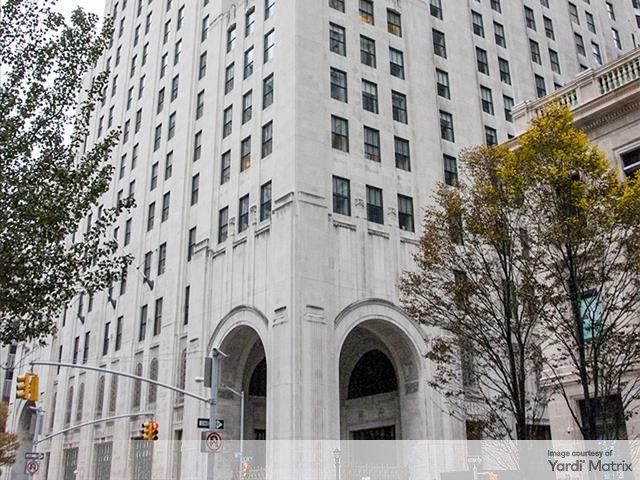CPE Asks: What Makes a Distressed Office Property a Good Investment?
Just because a building sells at a steep discount doesn't make it a can't-miss opportunity, says Adam Johnson of NAI Hiffman in this interview.

For opportunistic investors, pursuing stressed or distressed office properties in today’s volatile landscape is very tempting. Many office assets are struggling due to high costs, refinancing difficulties and shifting market dynamics, and property values are lower than ever. So why wouldn’t it make sense to buy?
Well, a cheap building is not always a golden opportunity, warns Adam Johnson, executive vice president with NAI Hiffman. Identifying the right property requires careful evaluation. Location, tenant variety and physical condition are critical elements that can tell a buyer whether a distressed office building has potential for a successful turnaround or is simply a bad bet.
By understanding key indicators, savvy investors will be able to navigate through the complexities of buying distressed property and uncover true opportunities in the market. Here’s what Johnson told Commercial Property Executive about how to identify value vs cheap, and avoid catching a falling knife.
Why aren’t all distressed office properties good investments?
Johnson: In many scenarios, we are seeing distressed assets that are well-located, but the basis of the building is just too high for refinancing. These properties will function again with an adjusted basis and cash available for capital improvements. Bad investments are usually in subpar locations and were bought purely for cash flow and the tenants, and cheap money pushed the yield up to justify the price.
Besides the cost of entry, many of the same fundamentals apply when shopping for distressed office properties: location, the physical condition of the property and its tenant mix.
READ ALSO: Office Sector Faces Increased Risk of Distressed Activity
How important is location when assessing the viability of a distressed office property as an investment?
Johnson: You know the adage: location, location, location. No matter what the asset, factors like accessibility, visibility, demographics and municipal support all contribute to the value of a property. If you lack these attributes, you can have the best building, but it will suffer for activity if nobody wants to be at that site.
What role does the underlying tenant base play in determining whether a distressed property is a good investment or not?
Johnson: Tenant credit quality will have a direct effect on financing ability and terms. The diversity of tenants will also contribute to the property’s ability to get financing and to spread risk. A building that is not devoting more than 10 percent of its space to one tenant will be more desirable than a two-tenant building that will have negative cash flow with a single tenant moving out.
A balanced and creditworthy tenant mix is one of the best buffers against market volatility and a key step toward a successful turnaround.
What’s key in avoiding the trap of catching a falling knife in today’s CRE market?
Johnson: You must understand the market in which you are buying. An investor should understand the market rates and concessions, plus the buildings that will be their competition. If you pay $100 per square foot for a building and your competitors have a basis of $50 per square foot, it will be difficult to compete.
Although credit conditions have tightened for office acquisitions, it’s still important not to overleverage yourself in this market. More conservative financing can better protect you until market conditions improve. Having money for capital improvements upfront and a clearly defined exit strategy is also critical.
How are investors financing their office purchases today?
Johnson: Many investors are purchasing all-cash right now due to many banks being on the sideline, but most buyers intend to pursue financing at a later date as interest rates decline and capital markets normalize.
In the end, you still need to get to a point where the property can be financed, and that requires understanding the weighted average lease term, tenant turnover risk and how best to position the building when it comes to financing. This approach also requires proactive management. Strategies may include renegotiating leases, diversifying the tenant base and spending your capital improvement dollars wisely to attract and retain tenants while capturing long-term value. Owners must work alongside managers to ensure buildings not only look modern, but just as critical, feel modern in terms of the amenities and services that are offered.
What advice would you give to less experienced investors who are tempted to buy a cheap office property?
Johnson: Know the market in which you are buying. Who are the tenants active in the area that you can potentially draw to the property? Just because the building is cheap does not make it a can’t-miss opportunity. Also know your competition, understand leasing activity levels and consider what it will truly take to lease space effectively and profitably. Experienced investors typically have a game plan and invest immediately into the asset to prepare it for leasing. Turning around any distressed asset, especially an office property right now, often takes time.
READ ALSO: Office Absorption to Stay Negative Through 2025
What’s your take on flipping activity in office?
Johnson: Buy-and-flip activity in office has been difficult recently as cap rates have risen. Well-tuned office investments provide higher annual returns and will do so for years to come, but the desired returns need to come from the annual cash flow. Investors who are trying to chase yield via a flip usually fall short. You may buy at $100 and sell at $100. It’s what you did in between those buying and selling points that will determine the success of the investment.
What should office investors expect in the near future?
Johnson: Many properties are underwater and simply can’t be refinanced at this point. Lenders can’t ‘pretend and extend’ much longer with pending loan expirations and will be forced to move these properties off their books. Also, banks can’t write down these assets immediately. It takes multiple quarters to adjust their book value—a process that started in 2023—so we expect to see more real estate-owned and note sales coming to the market in the near future.







You must be logged in to post a comment.